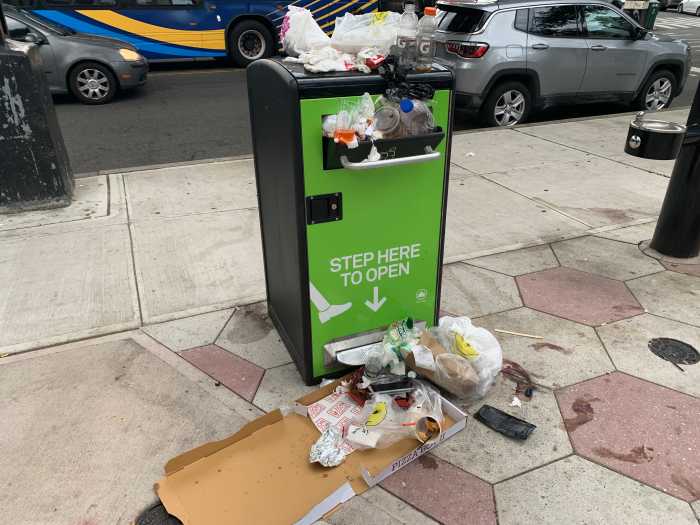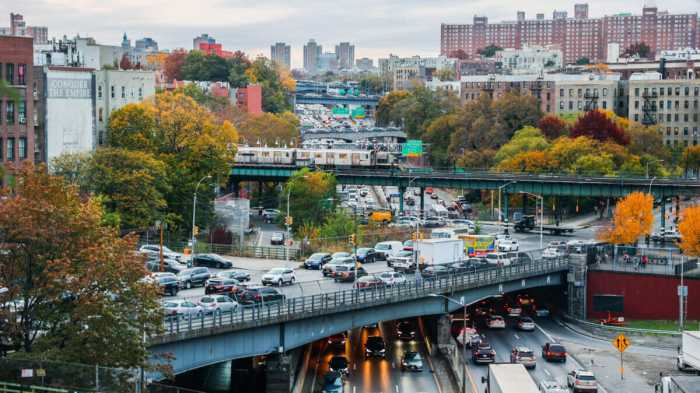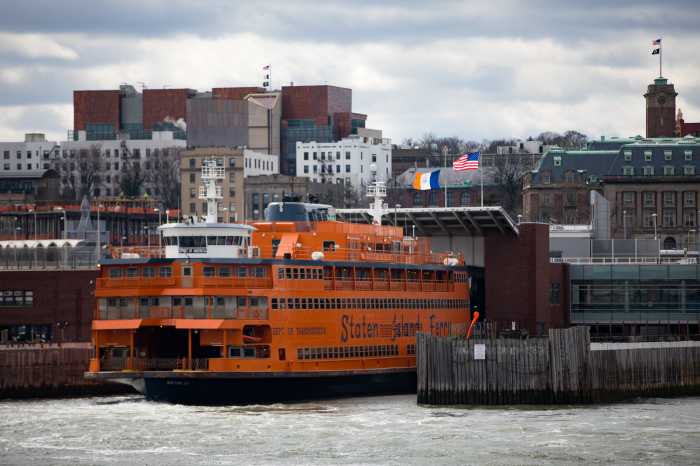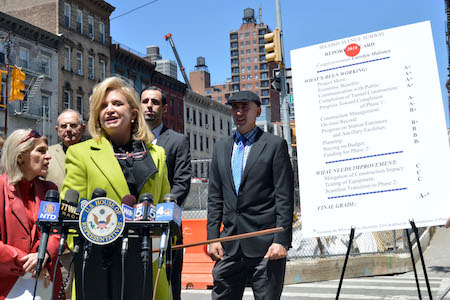 BY JACKSON CHEN | In a report card evaluating the Metropolitan Transportation Authority’s long-delayed Second Avenue Subway, Congressmember Carolyn Maloney, apparently unafraid of charges of grade inflation, gave the project an A-.
BY JACKSON CHEN | In a report card evaluating the Metropolitan Transportation Authority’s long-delayed Second Avenue Subway, Congressmember Carolyn Maloney, apparently unafraid of charges of grade inflation, gave the project an A-.
That grade, released in a press conference on May 16, was one notch up from the B+ she handed out in 2013 to the subway expansion expected to bring much-needed overcrowding relief to Upper East Side straphangers. To date, those commuters’ only subway option has been the Lexington Avenue line.
When the entire line is completed more than a decade from now, the project –– first discussed as early as 1919 –– will span the East Side, from Harlem to Hanover Street Downtown, with changes to the Q line and the introduction of the T line. A massive and complicated undertaking, the Second Avenue Subway project was split into four phases, with the completion of Phase 1 — with stations at 72nd, 86th, and 96th Streets — expected by the end of this year.
Maloney made clear that if the MTA misses that deadline, her views will change dramatically.
According to the transit agency, 94.4 percent of the construction of Phase 1 is complete, with all of the 22,000 feet of track laid and third rail installation almost complete.
Since the Second Avenue Subway would serve her East Side constituents, Maloney emphasized that she’s kept a close eye on the project, even visiting the underground construction sites.
With Phase 1 now nearing completion, the congressmember said she felt the time was right for an updated status report regarding key elements of the project.
According to Maloney, the overall project merit, its economic benefits, the completion of tunnel construction, and the MTA’s communication with the public all earned A+ grades.
A new category in Maloney’s grading system involves funding for the project’s Phase 2 –– stations at 106th and 116th Streets and a connection to the Lexington line at 125th Street –– which has seen much turmoil over the years.
In October of last year, the MTA board voted to cut roughly $1 billion from the Phase 2 funding in its 2015-2019 capital plan. After backlash from community and elected officials, the state restored $500 million that’s expected to be supplemented with a $500 million federal grant.
However, the MTA’s capital plan — expected to total approximately $29.5 billion through 2019 — is not entirely funded, with Governor Andrew Cuomo pledging $8.3 billion in funding and Mayor Bill de Blasio agreeing to commit $2.5 billion of city money.
According to Maloney, the deficit in capital funds will be covered out of federal dollars and other sources, but there are no guarantees as of yet about the level of federal funding. Despite that uncertainty, she assigned a B- on the question of Phase 2 funding.
Maloney was tougher in three other areas, where she handed out C grades, indicating that each “needs improvement.”
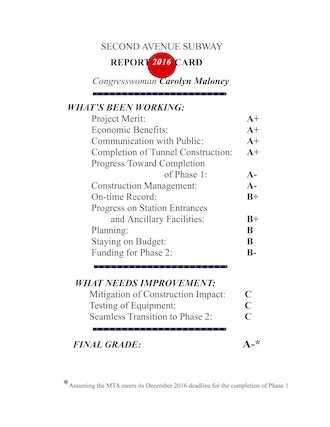
Regarding the MTA’s mitigation of construction impact, she offered the agency a small bump up from its previous C- grade dating all the way back to 2009. The main problem created by construction, the congressmember said, has been interference with business storefronts and outdoor seating.
Sam Musovic Jr., who runs three restaurants with his father Sammy, said they’ve sacrificed a lot in dealing with the MTA’s lengthy project.
The Musovics — who run Vero on East 77th Street, Sojourn on East 79th Street, and Selena Rosa Mexican on East 89th Street — said that construction equipment and infrastructure rose significantly higher than the restaurants’ storefronts.
“As a result, visibility was heavily decreased,” Musovic said. “We had to lower prices substantially and on top of that, try to increase visibility with signs in front.”
In the face of higher Upper East Side rent, he added, the restaurants have been forced to reduce staff and even cut down on hours of operation.
Counting on a December 2016 completion date, the Musovics are hoping the new subway stations will deliver significant boosts to business at the three restaurants.
“It would be phenomenal to have it on time,” Musovic said. “Considering how much it’s affected us, it would be a great burden off our back.”
Maloney also voiced criticism about the MTA’s testing of equipment, which she said the agency has left little time to do in advance of the new line’s launch, and what she termed “seamless transition” to Phase 2 construction between 96th and 125th Streets.
“The community has waited a long time, almost a hundred years for the Second Avenue Subway,” Maloney said. “It’s an incredible achievement, and I’d like to see them reach their deadline.”
Though clearly willing to look at the project’s positives and award an overall generous grade, she warned there is still a chance for the project to earn an F should the MTA run beyond its December deadline.
“There are good reasons to award a lot of high grades,” Maloney said. “But unless the project is completed by December 2016, the MTA could still wind up with a failing grade.”



